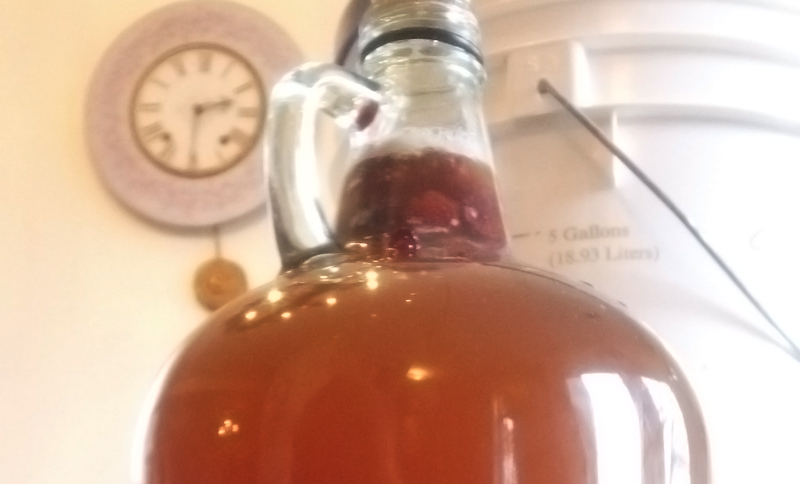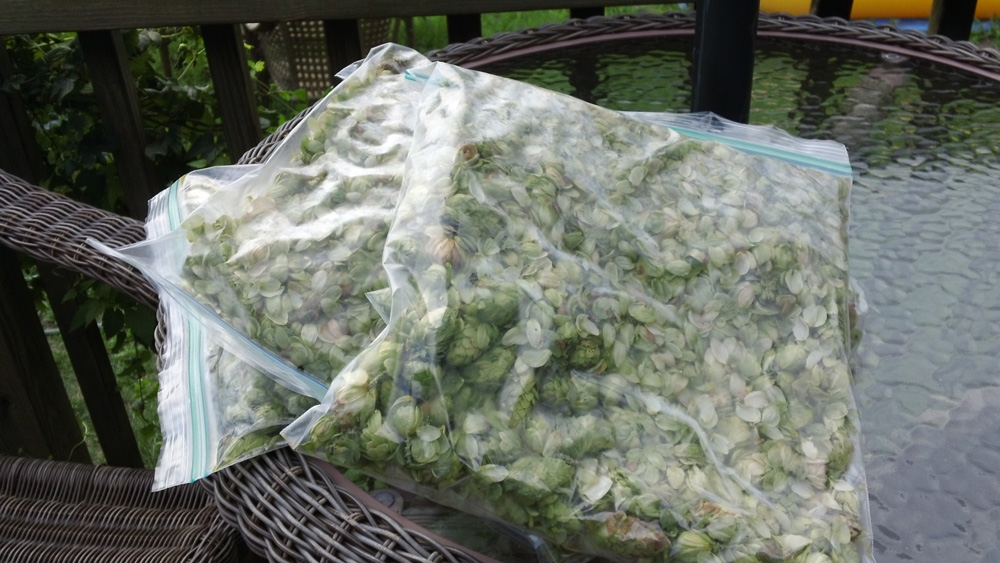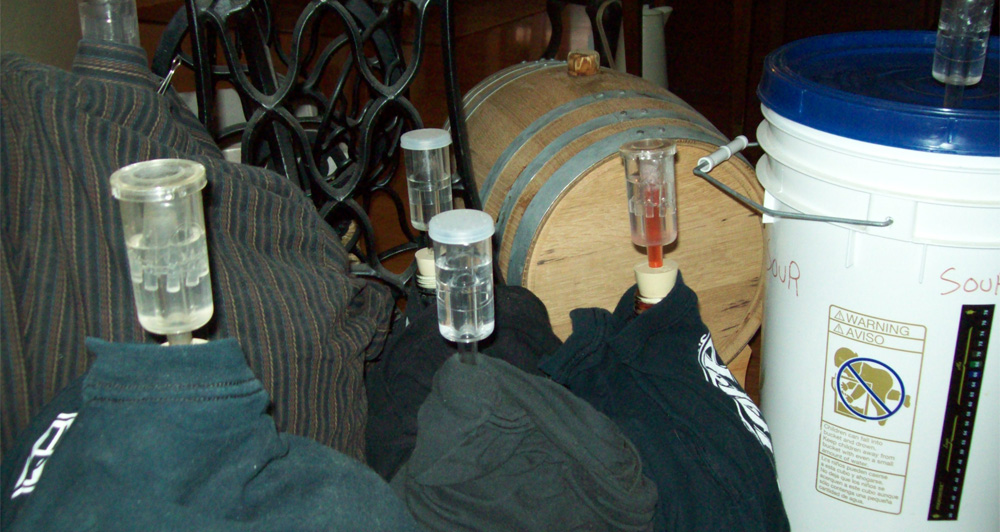Few things get a beer geek ready to talk your ear off than name-dropping a sour beer or two. Sour beers are more of a distinct continent on Planet Beer than a style as there are many styles of sour and/or wild ales. It’s a world countless homebrewers want to dive into, but also one they may find a little intimidating. Between strange microbes, lengthy fermentation times, the risk of contaminating your equipment you’d be forgiven for thinking that brewing sours is difficult.
The good news is, brewing sours isn’t all that much different than brewing any other beer. You brew, you pitch, you wait, you package. The only thing different are the details. Consider some of the DO’S and DON’TS below and you’ll find yourself navigating the slightly offbeat world of wild ales in no time.
Homebrewing has come a long way over the years, and there are now means of making quick sours that don’t require the extensive aging and wild fermentation traditionally used in making these beers. This piece, however, is going to be focused on traditional, longer-term sour ales. Quick methods of souring are for another article.
We would also be remiss if we did not clarify what kind of article this is. This is not “How To Brew Sour Beers,” nor is it intended to be a highly technical piece. This piece assumes you know the basics of beer brewing. Instead, consider it a “Helpful Tips” piece to either get you started on the right foot or to make adjustments to your already existing sour pipeline. So with that out of the way, let’s get into some tips that will help you improve your sour brewing game.
DO: Be Prepared For The Long Haul If You Plan on Making Traditional Sours
Brewing sour beer the traditional way, i.e. by pitching bugs like lactobacillus and pediococcus and letting them do their thing, is not for the impatient. You thought waiting a few weeks for your latest IPA was unbearable? Better steel yourself for sour brewing, because traditional sours can take anywhere from six months to a few years to be ready to drink. In most cases, homebrewers will fall within the six-month to one year mark, and may even be able to turn one around in three or so months, but if you’re trying something more ambitious, like a lambic-style beer, you’ll have to wait and see as things develop over time.
DON’T: Believe That All Sours Take Time
Traditional sours take time, but innovative homebrewers are finding ways to scratch the sour itch without taking a lot of time. Usually centering on styles like Berliner weisse (a favorite of this writer) and Gose, techniques like kettle souring, sour mashing, and even directly adding lactic acid can dramatically cut down turnaround times and get your mouth puckering much quicker than traditional methods would.
DO: Be Willing To Fail
Any adventurous brewer must be willing to fail, and when dealing with beers as finicky as sours, being prepared to face failure is an absolute must. You’ll often be dealing with blends of yeasts and bacteria rather than a single strain, which under certain conditions can take sour ales in unexpected directions. Dialing in the desired amount of sourness, funkiness, and tartness can sometimes be a challenge, and occasionally all those happy microbes can take a left turn and spin your beer into a musky, foul-smelling mess. It happens. Plus, it’s far more difficult to predict what unusual ingredients (spices, flavoring, etc.) are going to taste like on the other side of the souring process. Be prepared for some ups and downs.
DON’T: Try Wild Open Fermentation (Unless You’re Prepared for the Risks)

Create small test batches if you try a beer with wild yeast. Then harvest that (if successful) for a full sized batch
The open fermentation methods used by some European brewers are pretty incredible. Seemingly no protection from what’s floating around in the air, which is the polar opposite of what we learn to do as homebrewers, yet the beer that results is amazing. There is something alluring about the idea of letting Mother Nature have her way with your wort. It seems like magic, and indeed, the beer that results when Belgian brewers do it often is magic, but don’t get fooled into thinking you can throw a bucket out onto your back porch and get similar results. It’s important to remember that the microbes in the air in your region are NOT the same microbes that run wild in the sour beer capitals of the world. Further, their tanks and facilities and equipment are practically swimming in perfect little bugs that produce the wonderful beers we love so much. It’s essentially “pre-infected” with time-tested bugs. Yours, alas, is not.
None of this is to say you shouldn’t try your hand at a wild open fermentation. I am an advocate of breaking the rules and getting creative. Just be sure you understand that the most likely result is a batch of beer that is funky in all the wrong ways. If you do decide to roll the dice and see what’s floating around your yard, create a very small batch (half a gallon small), cover it with cheesecloth, and allow it to sit outdoors overnight, preferably in a screened in porch or similar location. After one night, bring it inside, cover, and allow fermentation to complete as normal. If it turns out well, pitch it into a slightly larger batch and grow the culture up. This allows you to experiment more without having the high cost of a 5 gallon batch going south.
DO: Pitch Standard Brewer’s Yeast
If you want a balanced, complex sour that has the best chance possible of turning into a beer you’ll enjoy drinking for months (or years!) to come, don’t rely solely on lambic blends and the like. Instead, pitch traditional brewer’s yeast first. Let it do its thing for 5-7 days, then pitch your sour blend. The sour bugs will chew up the sugars standard brewer’s yeast doesn’t get to, giving your sour ale the kind of balance that will keep your friends coming back for more. You can solely pitch sour bugs – this writer has done it – but your results will generally be better with a mixed fermentation method.
DON’T: Use Just One Type of “Bug”
This one is simple: When starting out you’ll always get better results with blends. Yes, you can pitch just a single strain if you want, but there is a reason why the best commercial brewers pitch specialized blends. Because it works. The good news is, you don’t have to create your own blends. Most of the top brewing yeast distributors offer a variety of sour and wild ale blends that will allow you to recreate an array of styles in the sour category, some modeled after popular commercial brews.
DO: Take Precautions to Avoid Oxygen Exposure During Aging
While I have and do use buckets to brew sours, carboys are your friend. Your enemy? Anything that increases oxygen exposure to your future sour (which buckets do). This is true of all fermenting beers, of course, but in sours it’s especially vital to avoid oxygen exposure because several of the bugs that give them their wonderfully funkiness and tartness utilize oxygen to produce acetic acid. Acetic acid creates a vinegar-like aroma and flavor, which may be desirable in small doses depending on the style (think Rodenbach, for instance) but could be an absolute disaster in others (such as a Berliner). These bugs thrive on oxygen. Too much and you’re brewing some really awful vinegar, not beer. Therefore, minimize sampling and gravity readings to once a month, purge with CO2 if possible when you do take a sample, ensure your airlocks are well filled, and if you can avoid buckets, do so. You’ll get a better beer as a result.
DON’T: Use High-Alpha Hop Strains

If possible, get your hands on aged whole cone hops when brewing traditional wild/sour ales. It’s how the masters do it.
For the vast majority of sours, you want low-impact hops with minimal hop flavor and aroma. Keep the Simco and Citra for your hop bombs. Instead, use a simple bittering hop like Tettnanger or Hersbrucker. If you want to get really traditional, use aged whole cone hops. They should be at least a year or two old, past the stage when they smell a little “green” and musty.
DO: Understand the Many Flavor Profiles of Sour Ales
As alluded to earlier, sour ales are often mistakenly referred to as a “style,” but in fact they represent a whole array of styles, and those styles can have dramatically different flavor profiles from one another. Bright, tart, crisp, sour, funky, musky, vinegar-tinged, sweet, candy-like, Earthy, chocolate-kissed. It’s a big umbrella with a lot of variety beneath it. Drink widely, learn what separates one sour from another, and you’ll get a better sense for the types of sours you want to brew.
DON’T: Use Your Usual Plastic Equipment
Once you’ve used your plastic gear for a batch of sour ale, say goodbye, man, because it’s gone. Yes, you’ll occasionally hear someone tell you that they have successfully gone back and forth between sour ales and standard beers with plastic gear thanks to their amazing cleaning and sanitation skills. That’s great for them, but is it a risk you really want to take? Plastic equipment can get tiny cuts and nicks and gouges that create a fantastic place for bugs to sit and wait for your next batch of beer. Suddenly, all your beers will be souring whether you like it or not! Bottling wands, tubing, plastic buckets, and so on – once used for a wild ale, they can be a ticking time bomb. Which leads to our next item…
DO: Re-purpose Old Gear For Sour Brewing
Let’s face it, we homebrewers tend to accumulate equipment like a 19-year-old with a Mustang accumulates speeding tickets. I have more bits of gear than I can ever hope to use. You probably do, too. A great way to make use of your old and neglected gear is to re-purpose it for sours. Have a bottling bucket that is a little long in the tooth? Turn it into your sour bottling bucket. Some carboys you don’t use anymore? Airlocks that have seen better days? Re-purpose them.
Side note: When I switch old gear and convert it to sour brewing gear, I’m sure to mark it clearly and loudly to ensure I don’t accidentally mix them up, and I don’t store the gear together or stack it with “normal” brewing gear. You should probably do the same. No need to risk cross-contamination.
DO: Harvest Yeast From Commercial Beers
When you start down the sour-brewing road, a great resource available to you are the dregs from your favorite commercial sours. Good instinct! You can get wonderfully hardy, complex bugs from bottled beers that are ideal for brewing your own sours. Just keep in mind that not all sours are created alike, and not all commercial sours are suitable for harvesting. Also, try using these as additions to a sour blend you’ve already pitched. This way you aren’t relying on a small culture of bugs to do all the work, and instead they play a complementary role.
Specifically, most Flanders Reds you see are pasteurized; you won’t get viable dregs from them. This includes Rodenbach and Duchess. The sweet, fruity lambics from brewers like Lindemans and Liefmans are similarly not suitable. While some American brewers like Allagash and Ommegang offer fine potential for dreg harvesting, others (such as New Glarus) do not. So before diving in, do some research, do some experimenting, and understand that some beers just aren’t right for this – but many are!
DO: Create a Sour “Pipeline”

Creating a pipeline of sours is the best way to ensure you always have some fresh lactic acid goodness on hand.
Brewing sours the traditional way can take a long time. It’s easy to get impatient when you have six months or a year between batches. Best way to beat the “Where’s My Beer?” blues is to create a sour pipeline. Brew a batch, a short time later (a month to two months) brew another, and so on. As soon as you bottle that first, another will be on its way shortly. Once you get a steady rotation in place, rotating between three or four sour brews, you’ll never want for lactic acid goodness again. If you have some older brew buckets lying around that you rarely use – and don’t we all? – go ahead and dedicate them to your sour pipeline.
DON’T: Bottle Until Your Gravity Has Been Stable For At Least A Month
This is absolutely vital! The little critters that funk up your wort chew up far more sugary goodness than standard brewer’s yeast does, eating up things your normal yeast would pass by. If you want to avoid bottle bombs, don’t be in a rush to package. You want a stable gravity reading for at least a month. Sometimes sours can creep along in their final stages, taking a few weeks to peel back a mere point or so on your FG. The last thing you want to do is to risk having that take place inside a sealed bottle, for reasons I should hope are obvious.
DO: Have Fun
This is the most important tip of all. Just enjoy yourself. Homebrewing should be fun and rewarding. Your sour adventures will have some ups and downs, but ultimately it’s not much different than brewing any other type of beer. There is a lot more ground to cover – this is a huge enough topic so that this article could have been twice as long, easy – so if you’re truly excited about creating your own sour ales at home, you’ll be glad to know there are some outstanding writers and bloggers out there devoted to the topic. Seek them out, do some reading, and happy brewing!
Source: homeBrewTalks